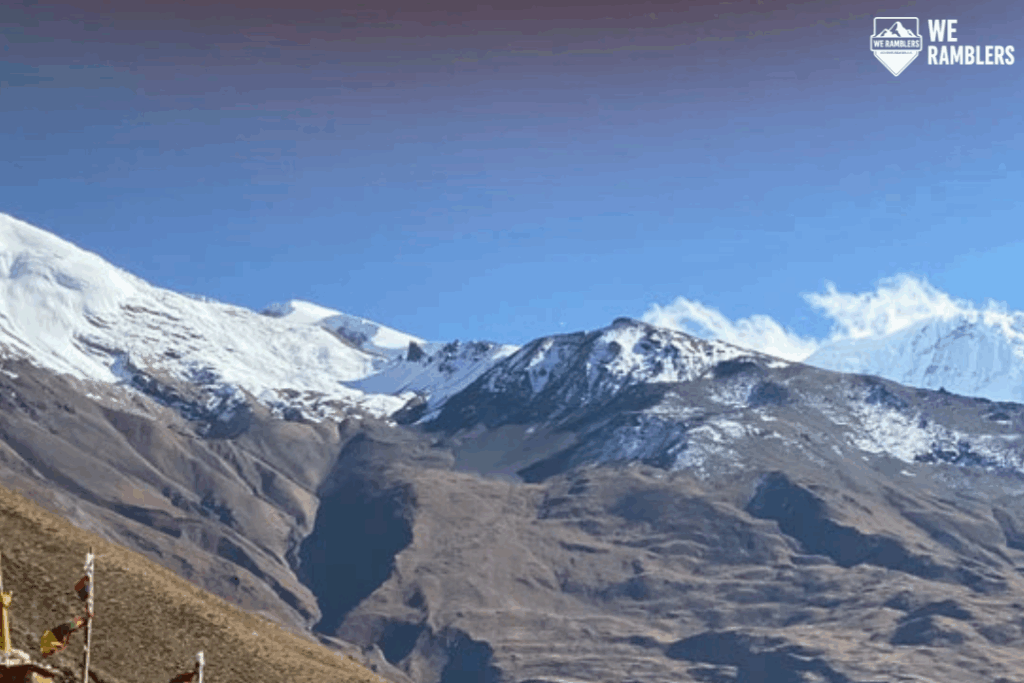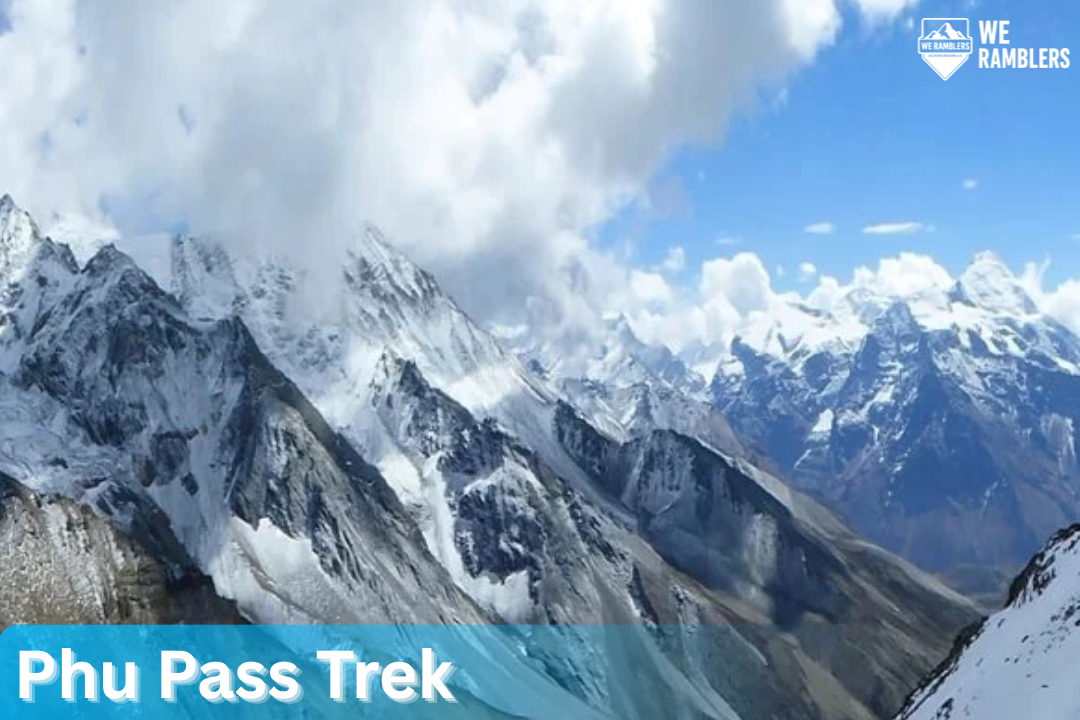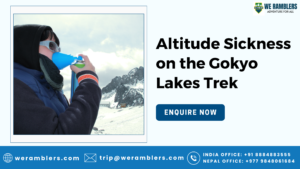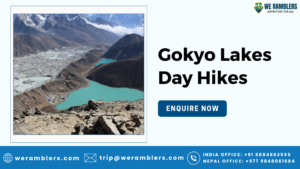Phu Pass Trek: A Remote Himalayan Gateway Between Nar Phu and Manang
Hidden deep within the Annapurna region lies a rugged trail few have dared to explore — Phu Pass. This remote Himalayan trek offers seasoned adventurers a chance to experience one of Nepal’s most secluded and pristine landscapes. As part of the lesser-known Nar Phu Valley trek, Phu Pass serves as a dramatic high mountain crossing in Nepal linking the mystical Nar and Phu villages with the vibrant trekking hub of Manang and even Tilicho Lake for those hungry for extended challenges.
Unlike the heavily trodden routes of Everest Base Camp or Annapurna Circuit, the Phu Pass Trek offers high solitude, genuine cultural immersion, and unfiltered Himalayan wilderness. This journey caters to those who have conquered more common trails and now seek the raw, unspoiled frontier of trekking in Nepal. With altitudes soaring above 5,000 meters, harsh weather, and challenging terrain, this route demands experience, fitness, and respect for nature’s might. The sense of accomplishment after completing this trek is immense, as it tests both physical endurance and mental resilience in one of Nepal’s last untouched corridors.
Why Trek to Phu Pass?
Venturing to Phu Pass means stepping into a world largely untouched by modern development. The trail winds through vast alpine deserts, towering snow peaks, and serene plateaus where nature thrives as it did centuries ago. Ancient Tibetan-style villages like Nar and Phu transport trekkers back in time, offering rare glimpses into deeply rooted Buddhist traditions and Himalayan ways of life.
Unlike the bustling Thorong La, this remote Himalayan trek remains blissfully quiet, allowing trekkers to soak in the surroundings without distraction. The Nar Phu Valley trek offers a rich cultural trekking Nepal experience as you traverse sacred monasteries, pass spinning prayer wheels, and witness timeless rituals preserved through generations. For those who crave the unbeaten path and desire to explore offbeat Annapurna trails, Phu Pass promises unmatched rewards. Every step provides an unparalleled intimacy with Nepal’s highlands where ancient trade routes once thrived and modern tourism has barely left a footprint, making it a sanctuary for true Himalayan explorers.
Nar and Phu Villages: Timeless Beauty
At the core of this adventure lie the Nar and Phu villages, nestled high in Nepal’s isolated valleys. These settlements, sitting at elevations of 4,000 meters and above, are architectural marvels composed of ancient stone houses, vibrant prayer flags, intricate Buddhist chortens, and historic gompas that have witnessed centuries of devotion.
Despite the harsh environment, the locals embody warmth and resilience, offering trekkers authentic hospitality, hearty meals, and stories passed down through countless generations. Both villages serve as critical acclimatization points during the Phu Pass Trek, providing time for rest and cultural interaction before ascending into even thinner air. Walking their narrow alleys, you’ll hear the soft chants of monks, see the yaks grazing on windswept slopes, and feel the pulse of a lifestyle that survives against formidable odds. The serenity and simplicity here offer a humbling contrast to the towering peaks that dominate the skyline.
Best Time to Trek Phu Pass
Timing is crucial when planning your Phu Pass Trek. The best time to trek Phu Pass falls within two primary windows: spring (March to May) and autumn (September to November). These seasons offer stable weather, clear skies, and minimal snowfall, making the arduous journey both safer and more visually rewarding.
During winter, heavy snow renders the high altitude pass Nepal dangerous and often impassable. Similarly, the monsoon season (June to August) brings torrential rain, landslides, and slippery trails, increasing the risk dramatically. Clear weather windows ensure not only safety but also maximize your chances of witnessing the Himalayan giants in their full glory — a vital consideration for any Nepal wilderness trek. The vibrant rhododendron blooms in spring and crystal-clear mountain views in autumn provide trekkers with unforgettable visual feasts, enhancing the overall trekking experience.
Phu Pass Trek Itinerary Overview
A well-planned Phu Pass itinerary ensures gradual acclimatization while allowing trekkers to savor the region’s extraordinary beauty. Below is a typical outline:
- Day 1: Koto (2,600m) → Meta (3,560m) — 6 to 7 hours
- Day 2: Meta → Phu Village (4,080m) — 6 to 7 hours
- Day 3: Acclimatization day at Phu
- Day 4: Phu → High Camp (~4,900m) — 4 to 5 hours
- Day 5: High Camp → Phu Pass (~5,050m) → Ngawal or Manang (~3,600m) — 8 to 10 hours
Accommodation varies between basic teahouse options in villages and camping at higher altitudes like High Camp. For those craving more, the trek can be extended toward Tilicho Lake or combined with the Naar Pass for a grander expedition. The itinerary also offers several side hikes that provide additional acclimatization opportunities while exploring hidden caves, meditation retreats, and panoramic viewpoints that remain invisible to most trekkers.
Required Permits and Logistics
Since this route enters restricted zones, securing the correct permits is essential. You’ll need both the Nar Phu restricted area permit and the Annapurna Conservation Area Permit (ACAP). Obtaining these requires coordination through a registered trekking agency, as independent trekking is not allowed in these zones.
Expect permit costs to be higher than standard routes due to the restricted nature of the valley. Trekkers must be accompanied by a licensed guide, and entry/exit checkpoints throughout the trail ensure compliance with local regulations. These requirements not only protect the fragile ecosystem but also enhance safety for travelers embarking on this remote Himalayan trek. Advanced preparation, including booking permits and arranging local transportation, is strongly recommended to avoid administrative hurdles once on-site.
Phu Pass Trek Difficulty & Terrain
Make no mistake — the Phu Pass Trek is a formidable challenge designed for seasoned hikers. The journey involves sharp elevation gains, glacier-influenced topography, and unpredictable weather. Sections of the trail include rocky ridges, scree slopes, and icy patches where sure-footedness is critical.
Due to its remoteness and difficulty, this route is not recommended for beginners or those unfamiliar with high-altitude trekking. A solid fitness level, prior experience with high altitude pass Nepal crossings, and an excellent acclimatization strategy are essential. Solo trekking is not permitted here, and attempting it without proper preparation could lead to serious consequences. Daily ascents often test one’s endurance while high winds and occasional snowfall demand constant vigilance, making every successful step an earned triumph over the harsh elements.

Altitude Risks and Safety Tips
Ascending to elevations beyond 5,000 meters exposes trekkers to acute mountain sickness (AMS) and its potentially life-threatening complications. The gradual Phu Pass itinerary helps minimize risks, but vigilance remains critical.
- Build in sufficient acclimatization days, especially in Nar and Phu villages.
- Recognize early AMS symptoms: headache, nausea, dizziness, and fatigue.
- Carry a basic medical kit, including medications like Diamox.
- Travel with a guide equipped with emergency contacts or a satellite phone.
- Be prepared for evacuation procedures, which may involve costly helicopter rescues on a Nepal wilderness trek.
Additionally, hydration, steady pacing, and adequate nutrition play crucial roles in maintaining physical performance. Trekkers are advised to have comprehensive travel insurance that covers high-altitude evacuations and medical emergencies, providing peace of mind during this demanding remote Himalayan trek.
Packing List Essentials for The Phu Pass Trek
Proper gear is non-negotiable for a successful Phu Pass Trek. Essential items include:
- Warm layers, including a down jacket, thermal base layers, and windproof outer shells.
- Durable trekking boots with ankle support.
- Crampons/microspikes for icy sections.
- Headlamp with spare batteries.
- Water purification system or filter.
- High-energy snacks for long trekking days.
- Multiple passport copies, required permits, and emergency cash.
- Compact medical kit and personal hygiene supplies.
In addition, bring a good quality backpack with a rain cover, UV-protected sunglasses, high-SPF sunscreen, trekking poles for balance, and a lightweight sleeping bag rated for sub-zero temperatures. Packing light while ensuring you have all essentials greatly improves your comfort and safety throughout the trek.
Route to Manang or Tilicho
After conquering Phu Pass, trekkers often descend toward the picturesque Phu to Manang route. Manang serves as both a relaxing recovery point and a crossroads for further adventures. Trekkers can continue toward Tilicho Lake or link back to the classic Annapurna Circuit.
This descent not only allows rest but also showcases the stark contrasts between the barren alpine zones and lush valleys below. Choosing this alternative over the mainstream circuit offers a fresh perspective on trekking in Nepal, blending thrilling high passes with cultural depth. Manang offers modern comforts like bakeries, internet cafes, and medical clinics, which feel almost luxurious after days in remote wilderness, making it an ideal midway stop before extending or concluding your journey.
Scenic Highlights and Wildlife
The Phu Pass Trek offers some of the most mesmerizing vistas in the Himalayas. Dominating the skyline are majestic peaks like Himlung Himal, Kangaru, and Annapurna II. Every bend in the trail reveals new wonders — glacier-fed rivers, hanging valleys, and surreal alpine meadows.
Wildlife enthusiasts may encounter blue sheep, grazing yaks, and the mighty lammergeier soaring above the valleys. The entire journey feels like a living documentary of Himalayan ecology, perfect for those seeking the essence of a Nepal wilderness trek. Rare sightings of snow leopards have also been reported in these remote corridors, adding an element of mystery and thrill to the experience that’s rarely found on more populated trekking routes.
Final Reflections & Why It’s Worth It
Crossing Phu Pass is far more than a physical achievement — it’s an emotional and spiritual journey that etches itself into the memory of every adventurer who dares attempt it. The solitude, the profound cultural encounters, and the raw, untamed nature combine to create an experience that transcends typical trekking in Nepal.
For those brave enough to step beyond the beaten path, the Phu Pass Trek offers an unmatched odyssey — a place where ancient culture, unyielding mountains, and personal triumph converge. The bonds you’ll form with locals, the friendships built on the trail, and the quiet moments staring into endless snowy horizons will stay with you long after the trek ends.
Trek with We Ramblers: Your Expert Partner for Phu Pass Trek
For those looking to experience the Phu Pass Trek with expert guidance, We Ramblers offers professionally organized trekking packages. With experienced guides, proper logistics, and personalized itineraries, we ensure safety, comfort, and a deeper cultural connection throughout this remote Himalayan trek. Our support allows trekkers to focus entirely on the adventure, scenery, and unforgettable moments Nepal has to offer. Contact us now to book your trekking package.





